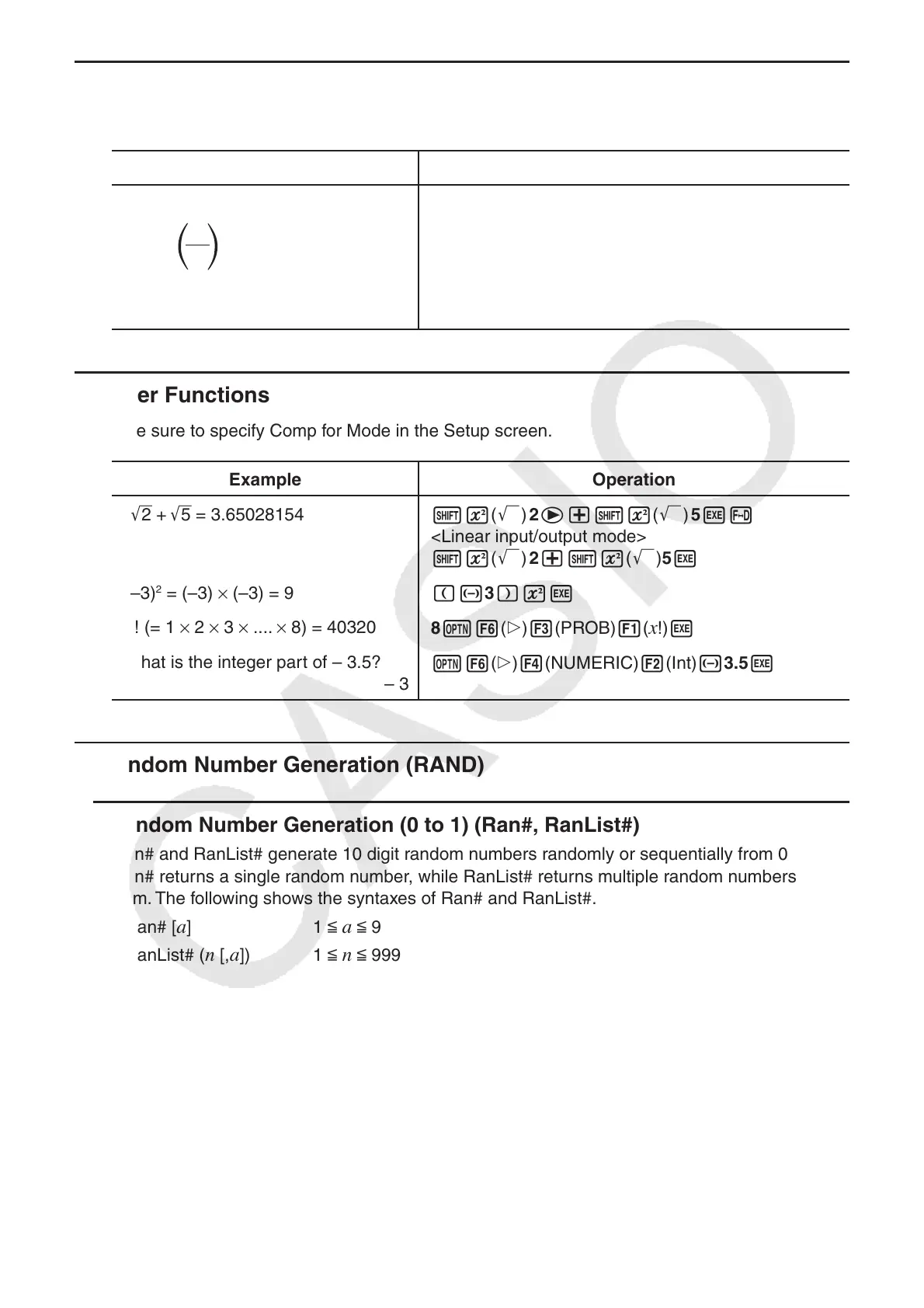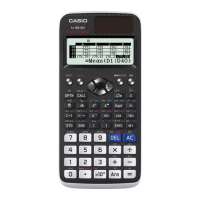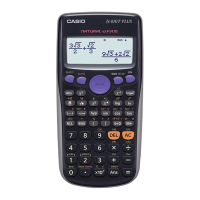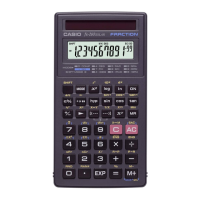2-17
k Hyperbolic and Inverse Hyperbolic Functions
• Be sure to specify Comp for Mode in the Setup screen.
Example Operation
sinh 3.6 = 18.28545536
K6( g) 2(HYPERBL) 1(sinh) 3.6 w
cosh
–1
20
15
= 0.7953654612 K6(g)2(HYPERBL)5(cosh
–1
)$20c15w
<Linear input/output mode>
K6( g) 2(HYPERBL) 5(cosh
–1
) (20
/15 )w
k Other Functions
• Be sure to specify Comp for Mode in the Setup screen.
Example Operation
'2 + '5 = 3.65028154
!x(') 2e+!x(') 5wM
<Linear input/output mode>
!x( ') 2 +!x( ') 5 w
(–3)
2
= (–3) × (–3) = 9
(-3 )xw
8! (= 1 × 2 × 3 × .... × 8) = 40320
8 K6( g) 3(PROB)
1( x !) w
What is the integer part of – 3.5?
– 3
K6( g) 4(NUMERIC)
2(Int) -3.5 w
k Random Number Generation (RAND)
u Random Number Generation (0 to 1) (Ran#, RanList#)
Ran# and RanList# generate 10 digit random numbers randomly or sequentially from 0 to 1.
Ran# returns a single random number, while RanList# returns multiple random numbers in list
form. The following shows the syntaxes of Ran# and RanList#.
Ran# [
a] 1 < a < 9
RanList# (
n [,a]) 1 < n < 999
•
n is the number of trials. RanList# generates the number of random numbers that
corresponds to
n and displays them on the ListAns screen. A value must be input for n .
• “
a ” is the randomization sequence. Random numbers are returned if nothing is input for “ a ”.
Entering an integer of 1 through 9 for a will return the corresponding sequential random
number.
• Executing the function Ran# 0 initializes the sequences of both Ran# and RanList#. The
sequence also is initialized when a sequential random number is generated with a different
sequence of the previous execution using Ran# or RanList#, or when generating a random
number.

